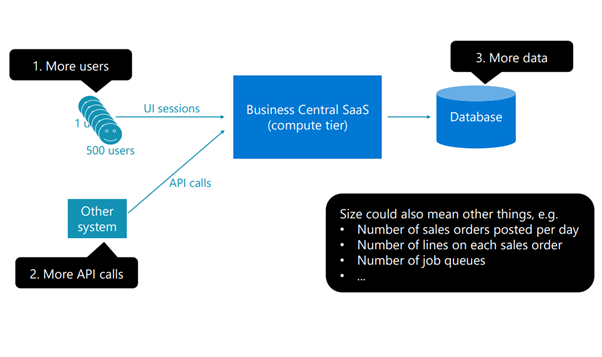Can Business Central also be used by large companies?
In my last blog I described the differences between the two ERPs of Microsoft, Business Central (BC) and Finance and Supply Chain management (F&SC). We discussed that the trend is that both ERPs are being developed more and more and can support increasingly larger companies. Business Central is marketed as an ERP for small to medium sized companies but the question this time is: Can BC also be used by large companies?
After many of experience with Microsoft Dynamics I visited my first Microsoft conference last year, Directions EMEA in Milan 2021. What a great experience that was! So many interesting seminars and workshops regarding the latest features, the BC roadmap and ISVs presenting their solutions. And, I must admit, to be able to travel again during these Covid times was very much appreciated.
Microsoft scales resources for BC SaaS environments
One seminar in particular I found very interesting which discussed how Microsoft scales resources for BC SaaS environments based on several measurements. For example, when a Virtual Machine (VM) has more than 80% CPU load on average in one hour, the VM will be scaled up by allocation more CPU power to it or a VM will be added to take over some of the load. This process is fully automated so fast changes in resource demand will be answered right away.
There are also other metrics which influence the required resources at any point in time. Examples are the number of users, API calls, job inquiries and the database size. BC by itself does not have any hard limits for any of these metrics so they will be scaled automatically if needed. Because of this the experience is that even very large companies can have BC running very smoothly.
Some examples of existing BC SaaS environments are:
- Database records
- User table: 1000
- Sales Invoice Header table: 800,000
- Item Ledger Entry table: 3,500,000
- G/L Entry table: 17,000,000
- Database size
- 400 GB
- 160 GB migrated from on-prem
- Browser interactions (click, tab out, etc.)
- 82,000 in one hour (23 per second on average)
- 385,000 in one day (in 780 browser sessions)
- Web service calls (API, SOAP, OData)
- 5,700 in one minute
- 2,700,000 in one day
- Transactions
- 6,000 sales orders posted in one day
- 3,300 lines on one sales order
Not all statistics apply to the same environment • They are not the limit of what BC SaaS can handle
What does it mean that customers get “larger”?
So?
Can BC SaaS handle large customers? When I look at these numbers, all I can say is, “Definitely!”
Do you want to know more? Please contact us at sales@dynamicpeople.com and we will schedule an appointment!


